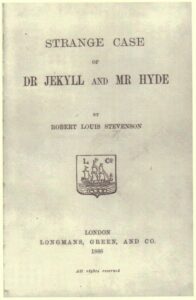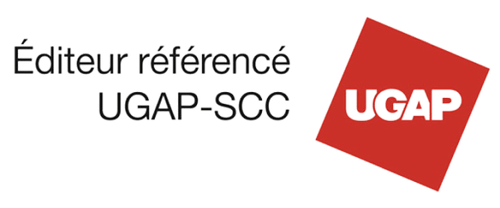
-
It's a mistaken belief about how the brain works.
If I tell you that we only use 10% of our brain, does that tell you something? Maybe it makes you smile too. This is one of the most widespread neuromyths. Few in the learning industry still believe it, but it lives on in popular culture. Perhaps we can partly blame science fiction literature and cinema, such as Luc Besson's film Lucy.
While this myth is easily dismissed, others are persistent even among those involved in learning and teaching. Over the past fifteen years, a growing number of studies on the subject have shown that many of these neuromyths are widespread in education, particularly among teachers. For example:
- Dekker, Lee, Howard-Jones & Jolies, Neuromyths in education: Prevalence and predictors of misconceptions among teachers, 2012
- Howard-Jones, Neuroscience and education: Myths and messages, 2014
- Tardif, Doudin & Meylan, Neuromyths Among Teachers and Student Teachers, 2015
- Bourassa, Menot-Martin, Philion, Neuroscience and education, for learning and support, 2017
The presence of these beliefs in pedagogy is problematic. Not only do they lead to a misunderstanding of the learning process on the part of the preceptor, but they can also influence his or her teaching practices. Fortunately, we can count on the cognitive sciences to introduce a certain rigor into the representations we have of our brains and how they function when learning.
The neuromyth is not always entirely false, but it's its significant discrepancy with what the scientific community is proposing, in an almost consensual way, that makes it an erroneous belief. There are dozens of them, all of them obstacles to questioning teaching practices. Some are obvious, while others are more subtle and persistent.
The myth: each of us has a preferred learning style that enables us to understand and remember knowledge better: visual, auditory or kinaesthetic.
The reality is quite different. No study has succeeded in proving the superiority of teaching that adapts its pedagogy to individual profiles. Although we may have preferences linked to a particular learning style, teaching according to these preferences does not promote better learning.
For example, some studies report that groups who have been taught methods adapted to their learning preferences learn no better than groups who have been taught methods not adapted to their preferences. (see Massa, Meyer, Testing the ATI hypothesis, 2006)
There is almost no research showing any positive effect from putting this theory into practice. In fact, these studies attempt to demonstrate that, rather than the divisive approaches recommended by the learning styles theory, teaching methods involving visual, auditory and tactile dimensions should be preferred, whether simultaneously or not. Multimodal presentation, or mutisensory integration, is therefore favored to improve the ability to perceive and process information. (see Wallace, Meredith, Stein, Multisensory integration in the superior colliculus of the alert cat. Journal of neurophysiology, 1998)
The myth : there's a difference between those of us who use our left brain more and those who use our right brain more. No, we don't have two brains in our skulls, we have two hemispheres. A "left-brain" learner would be more logical and analytical, and shine more in logical-mathematical tasks, whereas a "right-brain" learner would be more creative and intuitive, and shine more in visual-spatial tasks.
This idea has been around since the late 19th century, fuelled by scientists and writers alike. It's a nice theory, but it's wrong! We do need both cerebral hemispheres to carry out all the tasks performed by the brain. However, as I pointed out earlier, not all neuromyths are fundamentally false.
We have to go back to the 19th century to understand where this theory comes from. Until then, the brain had been considered a symmetrical organ, a repeating whole from left to right (hippocampus, hypothalamus, striatum...). However, in 1861 work of Paul Broca revealed for the first time the left lateralization of a major function: language production. Other works soon followed: those of John Hughlings Jackson (1872) demonstrating the right lateralization of visuo-spatial attention, and those of Wernicke (1876) defining language comprehension as being lateralized in the left temporal lobe.
Theasymmetry of the brain is thus proven, as is the unequal involvement of the two hemispheres in different functions. This is the starting point for the myth of the intellectual "left brain", which masters language and social conventions, and the instinctive "right brain", which enables us to find our way home and recognize our loved ones.
The theme was also popularized by writer Robert Louis Stevenson (1886) in The Strange Case of Dr. Jekyll and Mr. Hyde. The hero of the novel has two personalities:
- Dr Jekyll, logical, moral and in control of himself, represents the left brain;
- Mr. Hyde, primitive and bestial, represents the right brain.

This theory was taken up many times by other scientists, even in the 20th century. Since then, science has progressed considerably, and techniques such as MRI now make it possible to precisely identify the regions involved in a function.
A 2013 study attempted to determine the reality or otherwise of hemispheric dominance. Over 1,000 subjects underwent functional MRI, analyzing the activity of neurons on each side of the brain. The result was indisputable: neither hemisphere was more active overall than the other. The specific activity of a brain region seems to be essentially linked to the task performed, and not to an individual's hemispheric preference.
Ultimately, the right and left brains are components of a larger cognitive system. The brain may be asymmetrical in the performance of certain functions, but that doesn't mean it's lateralized!
The myth: there are eight different intelligences, independent and unequally distributed in each individual, explaining why some are gifted at music, others at mathematics. These types of intelligence would serve as a basis for improving teaching practices.
In 1983, American psychologist Howard Gardner published his book Frames of mind: The theory of multiple intelligences, in which he defines these intelligences (first 7, then 10): linguistic, spatial, logical-mathematical, interpersonal, intrapersonal, kinesthetic and musical, naturalist, existential and spiritual.
For Gardner, it's a question of intelligences that are independent of each other and unequally distributed among individuals. As soon as it was published, the theory met with both great success, particularly with many educationalists who used it to adapt their teaching, and fierce criticism from the scientific community, particularly for the vagueness of the criteria used to define these intelligences.
In 2012, two-thirds of teachers in the UK and the Netherlands considered Gardner's theory to be well-founded.
Once again, advances in brain imaging, coupled with the refinement of psychometric tests, have made it possible to revisit this concept. MRI-based studies (Colom R, Jung RE, Haier RJ. Distributed brain sites for the g-factor of intelligence. Neuroimage. 2006.) have shown that there are no skill-specific networks. Consensus has returned to the concept of a general intelligence. The notion of multiple intelligence is confused with that of talent, and the skills associated with these different "intelligences" are not independent of one another, as the theory of multiple intelligences claims.
Gardner's theory may not have proved its worth, but it has stimulated thinking in the field of education about the value of a greater variety of abilities in pupils.


2021 Pitchboy SAS. All rights reserved.